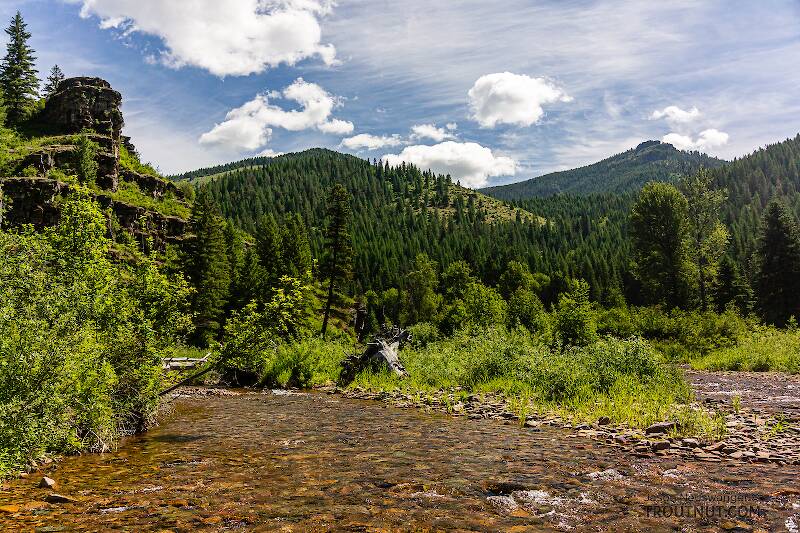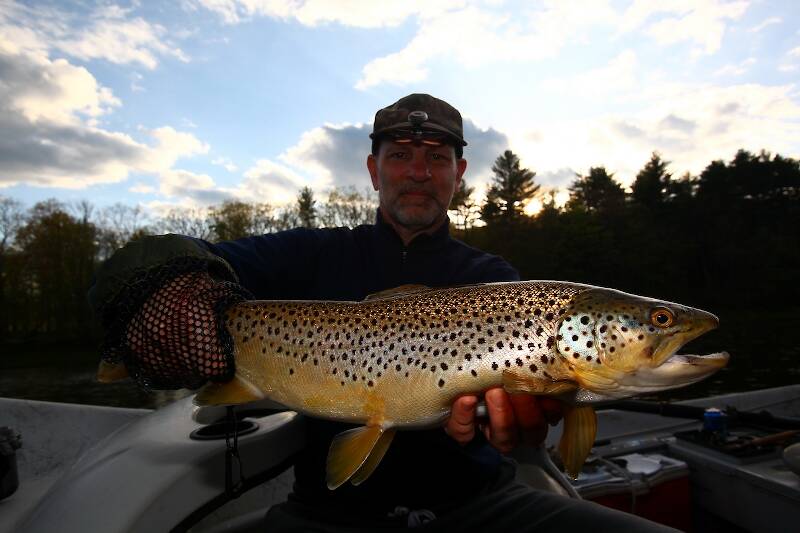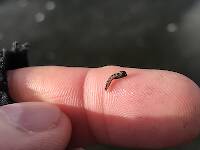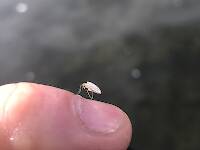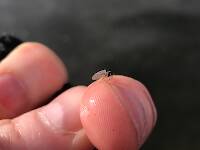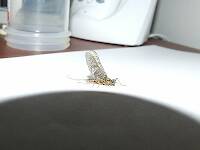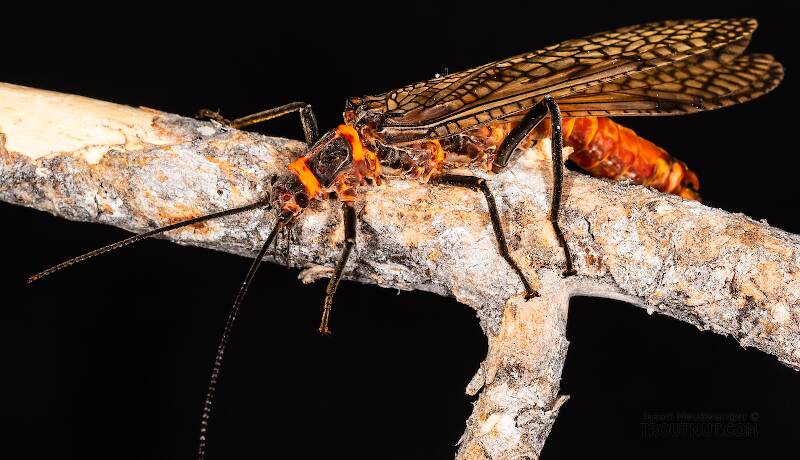
Salmonflies
Pteronarcys californica
The giant Salmonflies of the Western mountains are legendary for their proclivity to elicit consistent dry-fly action and ferocious strikes.
Featured on the forum
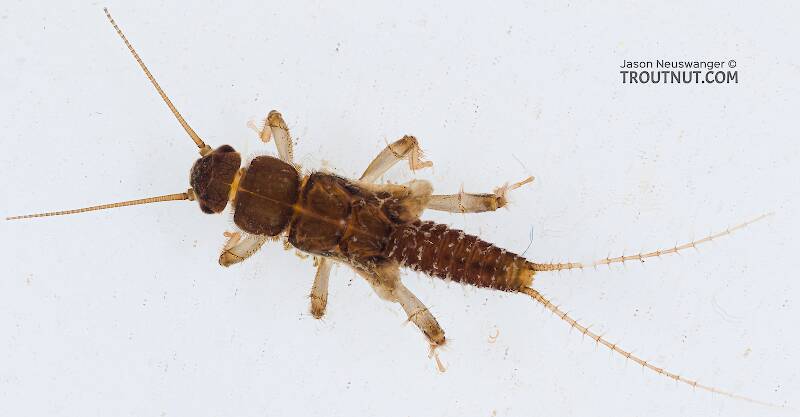
Nymphs of this species were fairly common in late-winter kick net samples from the upper Yakima River. Although I could not find a key to species of Zapada nymphs, a revision of the Nemouridae family by Baumann (1975) includes the following helpful sentence: "2 cervical gills on each side of midline, 1 arising inside and 1 outside of lateral cervical sclerites, usually single and elongate, sometimes constricted but with 3 or 4 branches arising beyond gill base in Zapada cinctipes." This specimen clearly has the branches and is within the range of that species.

Troutnut is a project started in 2003 by salmonid ecologist Jason "Troutnut" Neuswanger to help anglers and
fly tyers unabashedly embrace the entomological side of the sport. Learn more about Troutnut or
support the project for an enhanced experience here.
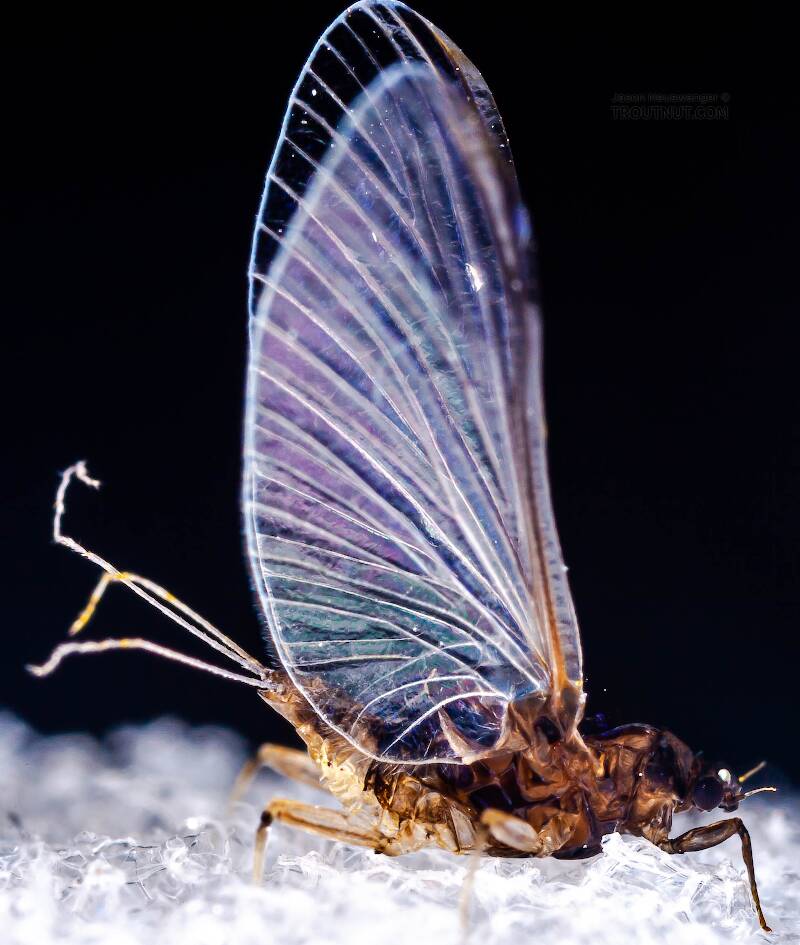
I photographed this Trico alive, although it didn't have much time left. These things die very quickly after they mate and it's hard to rush them back to the studio.
Jack_k on Mar 14, 2009March 14th, 2009, 7:45 pm EDT
These Tricos are found on most reservoirs in the Great Basin. They come off the water late in the afternoon and early evening. They pull out of their subimago shuck on any object, cars, shirt sleeves, eye glasses, or rocks. They appear as clouds on most reservoirs and stimulate an Alfred Hitchcock-like feeding frenzy with the fish. They are short lived but what an impact. This hatch lasts for several weeks here in the Great Basin.
A good spent wing example can be found at Just2ty4.com.
A good spent wing example can be found at Just2ty4.com.
Martinlf on Mar 15, 2009March 15th, 2009, 2:35 am EDT
How interesting. I always associate them with streams and had no idea they hatch in lakes. Tight lines,
"He spread them a yard and a half. 'And every one that got away is this big.'"
--Fred Chappell
--Fred Chappell
Quick Reply
Related Discussions
Topic
Replies
Last Reply
2
Sep 24, 2006
by Troutnut
by Troutnut
2
Sep 5, 2012
by Sayfu
by Sayfu
9
Mar 18, 2013
by Entoman
by Entoman

